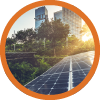- Taiwan Semiconductor Manufacturing Co. Ltd. - The portfolio's position in the semiconductor manufacturer helped relative performance. The firm’s share price rose as strong demand for AI-related chip production offset weaker-than-expected revenues from smartphone chips.
- Hitachi Ltd. - The portfolio’s position in the electronics company contributed to relative performance. Hitachi’s stock rose as it reported operating profit results above market expectations, thanks to strong order growth within its digital systems and services, green energy and mobility and connective industries. The company also announced a share buyback that further supported the stock.
- Toyota Motor Corp. - Not owning shares of the car maker benefited relative returns. The stock price declined due to weaker-than-expected guidance from management that overshadowed the company’s robust operational performance in Q2.
Quick links
Plan sponsors, consultants & group advisors
SLGI Asset Management Inc. is the investment manager of the Sun Life family of mutual funds. Commissions, trailing commissions, management fees and expenses all may be associated with mutual fund investments. Please read the fund’s prospectus. Mutual funds are not guaranteed, their values change frequently and past performance may not be repeated.
Sun Life Assurance Company of Canada is the issuer of accumulation annuities (insurance GICs), payout annuities and individual variable annuity contracts (segregated fund contracts). Any amount that is allocated to a segregated fund is invested at the risk of the contract owner and may increase or decrease in value. Sun Life Financial Trust Inc. is the issuer of guaranteed investment certificates.
Sun Life Global Investments is a trade name of SLGI Asset Management Inc., Sun Life Assurance Company of Canada and Sun Life Financial Trust Inc. all of which are members of the Sun Life group of companies.

